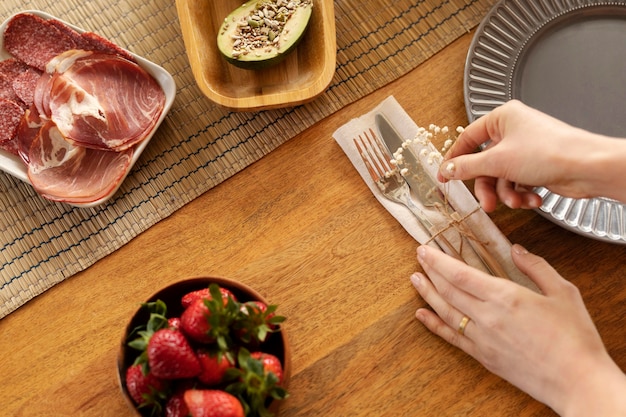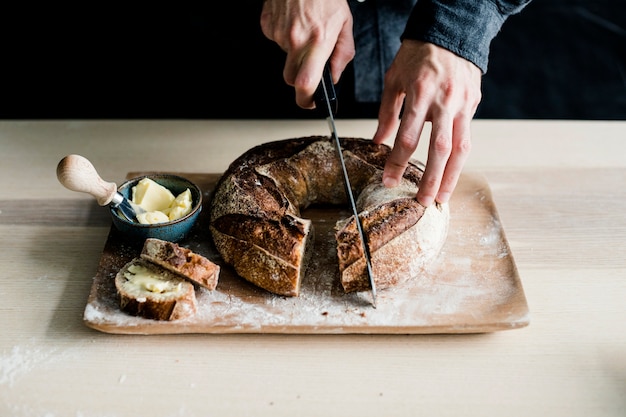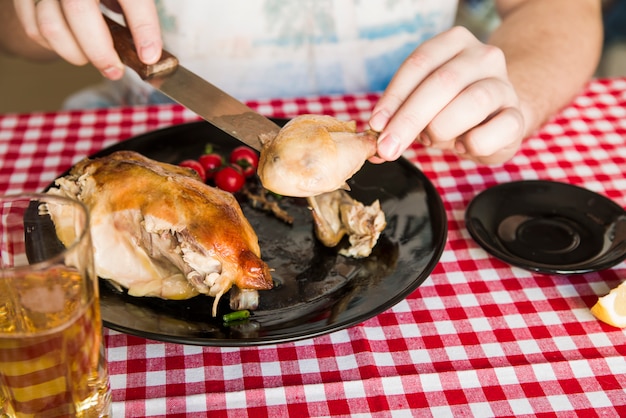Ah, pork tenderloin. A culinary gem, a blank canvas for flavor, and a surprisingly forgiving cut of meat. I've always loved the way it cooks up – tender, juicy, and bursting with flavor. But the thing is, getting that perfect pork tenderloin isn't just about throwing it on the heat and hoping for the best. It’s all about timing, and that's where this guide comes in.
I'm going to walk you through the ins and outs of cooking times for different methods, from roasting to grilling, and even pan-searing. I'll share my tricks for ensuring your pork is cooked to perfection – juicy, tender, and bursting with flavor. And don't worry if you're a beginner in the kitchen. I'm breaking everything down in a way that's easy to understand, even if you’re not a seasoned chef.
So, grab your favorite apron, get ready to learn, and let’s get cooking!
(Part 1) Understanding Pork Tenderloin

Before we fire up the oven or grill, let's get to know our star ingredient: the pork tenderloin. This lean, boneless cut is prized for its delicate texture and subtle flavor, making it incredibly versatile. It's perfect for simple roasting, grilling, or even whipping up a fancy dish.
What is a Pork Tenderloin?
Let's get a little technical. A pork tenderloin is a muscle found in the loin of the pig, right under the backbone. You've probably heard of the pork loin, which is a larger, thicker cut. But the tenderloin is the smaller, more delicate, and tender part of the loin, hence the name.
Why is it so Tender?
Well, the answer lies in the pig's life! The tenderloin is a muscle that doesn't get a lot of use. This means it has less connective tissue, which makes it naturally tender. It cooks quickly and retains its moisture, making it a real culinary star. It's no wonder it's often considered a "gourmet" cut.
How Big is a Tenderloin?
The size of a pork tenderloin can vary, but you'll generally find them between 1 to 1.5 pounds. Now, here's the tricky part – you'll find tenderloins sold either individually or as a pair. If you're buying a pair, you'll need to adjust your cooking times a bit, which we'll discuss in detail later on.
(Part 2) Essential Tools for Success

Alright, we've got the basics covered, so let's talk tools. You don't need a fancy culinary arsenal to cook a great pork tenderloin, but having the right tools makes a world of difference. Here's what I consider essential:
1. A Good meat thermometer
This is absolutely non-negotiable. A meat thermometer is your best friend when cooking pork. You want to ensure it's cooked to the right internal temperature, which is crucial for food safety. Don't rely on guesswork or visual cues – a thermometer is the only way to be truly sure. I'm talking about a digital one here, folks. The instant feedback is invaluable. You can pick them up for a very reasonable price, and trust me, they'll pay for themselves.
2. A Cutting Board
You need a solid surface to work on, and a cutting board is essential for prepping your tenderloin. It can be a basic plastic one or a fancier wooden one – just make sure it's big enough for the job.
3. A Sharp Knife
Don't worry, you won't be performing any major butchering operations. But you do need a decent knife to trim any excess fat and make any necessary cuts. A good chef's knife will do the trick nicely.
(Part 3) cooking pork tenderloin: The Basics

Let's get down to business. We're about to explore the different methods for cooking pork tenderloin, and each one has its own unique quirks. We'll be covering roasting, grilling, and even pan-searing, so get ready to discover your new favorite way to cook pork!
1. Roasting
Roasting is a classic way to cook pork tenderloin and it's incredibly forgiving. The oven does all the work, allowing you to relax and let the tenderloin cook to perfection. Here's my approach:
Preparation
First things first, preheat your oven to 375 degrees Fahrenheit (190 degrees Celsius). Give it at least 10 minutes to heat up thoroughly. Now, grab your pork tenderloin and pat it dry with paper towels. Season generously with salt and pepper, and add your favorite herbs and spices. I'm a big fan of a blend of rosemary, thyme, and garlic. For an extra flavor kick, rub it with olive oil or even a glaze. Remember, this is your culinary creation, so get creative!
Cooking
Place the seasoned tenderloin on a baking sheet and put it in the preheated oven. The cooking time will vary depending on the size of the tenderloin. For a 1-pound tenderloin, you'll want to cook it for about 25-30 minutes. For a larger one, say 1.5 pounds, add another 10-15 minutes to the cooking time.
Checking for Doneness
The best way to know if your pork tenderloin is cooked through is to use a meat thermometer. Insert it into the thickest part of the tenderloin, and aim for an internal temperature of 145 degrees Fahrenheit (63 degrees Celsius). Once it reaches that temperature, it's ready to be taken out of the oven.
Resting
Don't rush to slice into it right away! Let the tenderloin rest for 10-15 minutes before carving. This allows the juices to redistribute, ensuring it stays moist and tender. It’s a simple step but makes a big difference in the final product.
2. Grilling
Grilling is a great way to add that irresistible smoky flavor to your pork tenderloin. It's also a fantastic option for warmer weather when you want to enjoy some outdoor cooking. Here's how to grill up a storm:
Preparation
Get your grill hot! Aim for medium-high heat, around 400 degrees Fahrenheit (200 degrees Celsius). For a gas grill, make sure the burners are evenly heated. If you're using charcoal, wait until the coals are glowing red and covered in white ash. While the grill is heating, season your pork tenderloin with salt, pepper, and any other spices you like. I often use a rub for an extra flavor punch, but you can stick with the basics if you prefer.
Cooking
Place the tenderloin directly over the hot part of the grill, ensuring it's not touching the flames. Close the lid and cook for about 5-7 minutes per side. You want to get a nice char on the outside but keep the inside juicy. After 5-7 minutes, move the tenderloin to a cooler part of the grill or off the direct heat. Continue to cook until the internal temperature reaches 145 degrees Fahrenheit (63 degrees Celsius). This will take an additional 10-15 minutes, depending on the size of the tenderloin.
Checking for Doneness
Don't forget your trusty meat thermometer! It's your key to grilling success. Stick it into the thickest part of the tenderloin and make sure it reaches 145 degrees Fahrenheit (63 degrees Celsius). If you're using a gas grill, you can check the temperature with the built-in thermometer, but it's still a good idea to use a meat thermometer for accuracy.
Resting
Let the pork tenderloin rest for 5-10 minutes before slicing. This helps the juices redistribute, leaving you with a tender, delicious meal.
3. Pan-Searing
Pan-searing is a quick and easy way to cook pork tenderloin, perfect for those nights when you're short on time but still want a flavorful dinner. Here's how to get started:
Preparation
Get your pan hot! Heat a large skillet or cast-iron pan over medium-high heat. This is crucial. You want the pan to be really hot so you get a nice sear on the pork. Once it's hot, add a tablespoon or two of olive oil or your favorite cooking oil.
Cooking
Pat your pork tenderloin dry with paper towels and season it with salt, pepper, and any other herbs or spices. Then, carefully place the tenderloin in the hot pan. Don't overcrowd the pan, or it'll steam instead of sear. Let it cook for 3-4 minutes per side, or until it's nicely browned and crisp. Once it's seared, reduce the heat to medium-low, cover the pan, and continue cooking for another 10-15 minutes, or until the internal temperature reaches 145 degrees Fahrenheit (63 degrees Celsius). You can flip the tenderloin over a few times during this process to ensure it cooks evenly.
Checking for Doneness
Don't forget to check the internal temperature with your trusty meat thermometer. Make sure it reaches 145 degrees Fahrenheit (63 degrees Celsius). If you're using a digital thermometer, you can leave it inserted in the tenderloin while it cooks so you can monitor the temperature. Just be careful not to move the pan around too much to avoid breaking the thermometer.
Resting
Let the tenderloin rest for 5-10 minutes before slicing. This allows the juices to redistribute, ensuring it stays moist and tender.
(Part 4) Pork Tenderloin Cooking Times: The Breakdown
Now, let's talk about cooking times. Remember, these are general guidelines. The actual cooking time will vary depending on the size and thickness of your tenderloin. But, this table should give you a good starting point.
| Cooking Method | Cooking Time | Internal Temperature |
|---|---|---|
| Roasting | 25-35 minutes (for a 1-pound tenderloin) | 145 degrees Fahrenheit (63 degrees Celsius) |
| Grilling | 15-20 minutes (for a 1-pound tenderloin) | 145 degrees Fahrenheit (63 degrees Celsius) |
| Pan-Searing | 15-20 minutes (for a 1-pound tenderloin) | 145 degrees Fahrenheit (63 degrees Celsius) |
(Part 5) Tips and Tricks for Cooking Pork Tenderloin
Now that we've covered the basics, let's dive into some tips and tricks that can elevate your pork tenderloin game. These are the little secrets that can make all the difference between a good meal and a truly memorable one.
1. Don't Overcook It!
Pork tenderloin is incredibly lean, which means it can dry out quickly if overcooked. The goal is to cook it just until it reaches an internal temperature of 145 degrees Fahrenheit (63 degrees Celsius). Anything more than that, and you'll end up with a dry and tough piece of meat. Use that meat thermometer and trust it!
2. Rest, Rest, Rest!
I can't stress this enough. Letting your pork tenderloin rest for 10-15 minutes after cooking allows the juices to redistribute. This is the secret to getting that juicy, tender texture that we all love. It's a simple step, but it makes a big difference!
3. Get Creative with Flavor
Pork tenderloin is a blank canvas for flavor. Experiment with different herbs, spices, glazes, and marinades. You can even try stuffing it with your favorite fillings. I like to use a blend of rosemary, thyme, and garlic, but you can go for something more exotic like ginger, chili flakes, or even citrus zest. The possibilities are endless!
4. Don't Forget the Sides
A delicious pork tenderloin deserves equally delicious sides. I love to pair it with roasted vegetables like asparagus, Brussels sprouts, or carrots, or a simple salad. You can also go for a creamy mashed potato or some rice pilaf. The choice is yours!
(Part 6) Cooking for Two or More?
Let's talk about cooking for a crowd. If you're cooking for more than just yourself, consider buying a pair of pork tenderloins instead of just one. This way, you'll have plenty of meat to feed everyone. But remember, you'll need to adjust your cooking time accordingly. For a pair of 1-pound tenderloins, add about 10-15 minutes to the cooking time, depending on your chosen method. Just keep an eye on it and make sure the internal temperature reaches 145 degrees Fahrenheit (63 degrees Celsius).
(Part 7) Pork Tenderloin: Leftovers? No Problem!
We've all been there – you've cooked a delicious pork tenderloin, and now you've got leftovers. Don't despair! There are so many delicious things you can do with leftover pork tenderloin.
1. Sandwiches
Slice the leftover pork tenderloin and add it to sandwiches. You can use a simple bread roll or a more gourmet sourdough loaf. Add your favorite toppings like lettuce, tomato, and mayonnaise. It's a perfect lunch or light dinner option.
2. Salads
Dice up the leftover pork tenderloin and toss it into a salad. It's a great way to add some protein and flavor to your salad. I like to combine it with mixed greens, fresh vegetables, and a light vinaigrette.
3. Pasta
Slice the leftover pork tenderloin and add it to your favorite pasta dish. It's a great way to use up leftovers and add some extra protein and flavor. You can try it with a creamy sauce, a tomato-based sauce, or even a simple olive oil and garlic sauce.
(Part 8) FAQs
Let's address some of the most common questions about cooking pork tenderloin.
1. How do I know if my pork tenderloin is cooked through?
The best way to know if your pork tenderloin is cooked through is to use a meat thermometer. Insert it into the thickest part of the tenderloin, and aim for an internal temperature of 145 degrees Fahrenheit (63 degrees Celsius). Once it reaches that temperature, it's ready to be taken out of the oven or off the grill.
2. Can I freeze pork tenderloin?
Yes, you can freeze pork tenderloin. Wrap it tightly in plastic wrap or aluminum foil and place it in a freezer-safe bag. It can be frozen for up to 3 months. When you're ready to use it, thaw it in the refrigerator overnight. You can also thaw it in a cold water bath, but make sure to change the water every 30 minutes. Just remember, freezing and thawing can affect the texture of the meat, so it's best to use it for dishes like stews or casseroles, where the texture isn't as critical.
3. What if my pork tenderloin is too thin?
If your pork tenderloin is too thin, you can butterfly it by slicing it lengthwise and opening it up like a book. Then, you can pound it flat with a meat mallet to make it even thinner. This will help it cook more evenly and prevent it from drying out. You can also wrap it in bacon to add extra moisture and flavor.
4. Can I overcook pork tenderloin?
Yes, you can overcook pork tenderloin, and it will make it tough and dry. The ideal internal temperature for pork tenderloin is 145 degrees Fahrenheit (63 degrees Celsius). Anything more than that, and you risk overcooking it. So, use that meat thermometer and keep a close eye on the temperature.
5. What can I serve with pork tenderloin?
Pork tenderloin is incredibly versatile, so you can serve it with a wide range of sides. I love to pair it with roasted vegetables, like asparagus, Brussels sprouts, or carrots. You can also go for a creamy mashed potato, a simple salad, or some rice pilaf. The choice is yours! And don't forget about the sauces! A simple pan sauce or a more complex glaze can really elevate the dish.
Everyone is watching

Perfect Rice Every Time: The Ultimate Guide to Cooking Rice
Cooking TipsAs a self-proclaimed foodie, I've always been a bit obsessed with rice. It's the foundation of countless cuisi...

Prime Rib Roast Cooking Time Chart: Per Pound Guide
Cooking TipsPrime rib roast. Just the name conjures images of lavish dinners, crackling fires, and hearty laughter. It’s ...

The Ultimate Guide to Cooking Asparagus: Tips, Techniques, and Recipes
Cooking TipsAsparagus. The mere mention of this spring delicacy conjures up images of vibrant green spears, crisp and burs...

Ultimate Guide to Cooking the Perfect Thanksgiving Turkey
Cooking TipsThanksgiving. Just the word conjures up images of overflowing tables laden with delicious food, the scent of r...

How Long to Bake Potatoes in the Oven (Perfect Every Time)
Cooking TipsBaked potatoes are a staple in my kitchen. They're incredibly versatile, delicious, and surprisingly easy to m...
